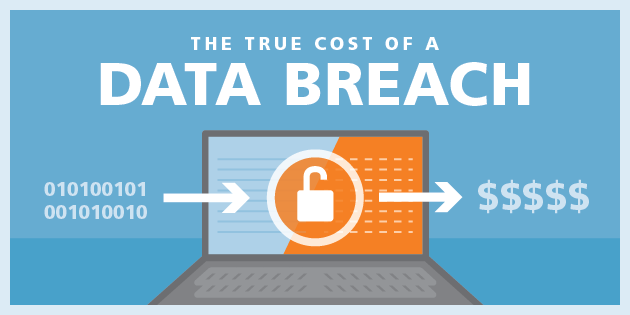Introduction to Data Breach Policy
Under the General Data Protection Regulation (GDPR) and the Data Protection Act 2018 (DPA 2018), organizations handling personal data must implement measures to prevent, detect, and respond to data breaches. A Data Breach Policy outlines these procedures to ensure compliance and protect individuals’ data privacy.
Understanding Data Breaches
What constitutes a Data Breach?
- A Data Breach is defined as any unauthorized access, loss, destruction, alteration, or disclosure of personal data that compromises its confidentiality, integrity, or availability.
Legal Framework in England and Wales
- GDPR and DPA 2018 mandate organizations to report certain types of data breaches to the Information Commissioner’s Office (ICO) and affected individuals within specific timelines.
Components of a Data Breach Policy
Policy Objectives
- Define the objectives of the Data Breach Policy, emphasizing compliance with data protection laws, maintaining trust with stakeholders, and minimizing harm in case of a breach.
Data Breach Response Team
- Identify roles and responsibilities of individuals within the organization who will be part of the Data Breach Response Team, including data protection officers, IT security personnel, and legal advisors.
Key Procedures and Guidelines
Data Breach Detection
- Establish mechanisms for detecting potential data breaches promptly, such as intrusion detection systems, monitoring tools, and employee reporting procedures.
Incident Assessment and Notification
- Outline procedures for assessing the severity and impact of a data breach, determining if it meets the criteria for notification to the ICO and affected individuals.
Notification Requirements
ICO Notification
- Detail the process and timeline for notifying the ICO of a data breach, including the information required and considerations for assessing risks to individuals’ rights and freedoms.
Individual Notification
- Describe how and when affected individuals will be informed about the data breach, including the content of the notification, mitigation steps taken, and contact information for further assistance.
Legal Obligations and Compliance
GDPR and DPA 2018 Compliance
- Ensure that the Data Breach Policy aligns with GDPR principles, including transparency, accountability, and the lawful processing of personal data.
Record-Keeping and Documentation
- Establish protocols for documenting all data breaches, responses, and remedial actions taken, which may be subject to scrutiny by regulatory authorities.
Training and Awareness
Employee Training
- Provide regular training sessions to employees on recognizing, reporting, and responding to data breaches effectively, emphasizing the importance of data protection and privacy.
Continuous Improvement
- Implement a review and update mechanism for the Data Breach Policy to reflect changes in technology, legal requirements, and organizational processes.
Conclusion
A well-crafted Data Breach Policy is essential for organizations in England and Wales to protect personal data, comply with legal obligations, and maintain trust with stakeholders. By following these guidelines and integrating best practices, organizations can effectively mitigate risks and respond promptly to data breaches.
What is a Data Breach Policy?
A Data Breach Policy outlines procedures and protocols that organizations follow in the event of a data breach to minimize harm and comply with data protection laws.
Why is a Data Breach Policy important?
A Data Breach Policy helps organizations prepare for and respond to data breaches swiftly and effectively, protecting individuals’ data privacy and maintaining regulatory compliance.
What should a Data Breach Policy include?
Components typically include incident detection and reporting procedures, roles and responsibilities of the response team, criteria for assessing breaches, and notification processes.
Who is responsible for implementing a Data Breach Policy?
Data protection officers, IT security teams, and senior management are typically responsible for implementing and overseeing compliance with the Data Breach Policy.
When should a Data Breach Policy be reviewed and updated?
It should be reviewed regularly to align with changes in technology, data processing practices, and legal requirements, ensuring it remains effective and up to date.
How does a Data Breach Policy help with GDPR compliance?
It ensures organizations meet GDPR’s requirements for reporting data breaches to the supervisory authority (e.g., ICO) and affected individuals within specific timelines.
What are the steps in responding to a data breach under a Data Breach Policy?
Steps typically include identifying and containing the breach, assessing its impact, notifying relevant parties, mitigating risks, and documenting all actions taken.
Are there legal consequences for not having a Data Breach Policy?
Yes, organizations may face fines, sanctions, and reputational damage for failing to implement adequate data protection measures, including a Data Breach Policy.
How can employees contribute to effective implementation of a Data Breach Policy?
By undergoing training on data protection principles, recognizing potential breaches, and promptly reporting incidents to designated personnel.
Can a Data Breach Policy prevent all data breaches?
While it can mitigate risks, no policy can guarantee prevention. However, a well-prepared policy can significantly reduce the impact and consequences of data breaches.
- Website Privacy Policy – First & Third-Party Cookies + Analytics - August 10, 2024
- Plant Maintenance Agreement - August 7, 2024
- Hire Of Room, Hall Or Other Premises - August 4, 2024










